| VARIETY |
DESCRIPTION |
| 1. Barleria |
| CO 1 (1984) |
It is a clonal selection from the local type. It bears attractive pink flowers, producing on an average 2.11 kg of flowers per plant in a year. It is produces flower early and flowers become available in about 210 days after planting. |
| Top |
| 2. Chrysanthemum |
 |
| CO 1 (1985) |
|
It is a selection made form a bulk population introduced from Hozur of Dharmapuri district. Flowers are medium sized (2.5g) and attractive (canary yellow) The flowers have thick, sturdy stalks, which are an added advantage for easy tying in the making of garland and other decoratives. It flowers early by about 15-20 days and the blooming period also lasts longer when compared to the other local cultivars. Average yield on main crop is 16.7 t/ha. |
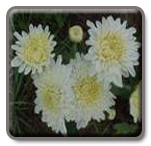 |
| MDU 1 (1985) |
|
It is a selection from the germplasm type. It is an early type, coming to first flowering in 104 days as against 120 days in the local type. The flowers are large and attractive sulphur yellow in colour with a diameter of 3.90 cm. It yields 30.59 tonnes per hectare per year in two crops (main and ratoon crop). |
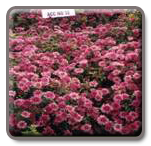 |
| CO 2 (1989) |
|
This is a clonal selection from among the germplasm
type introduced from the National Botanical Research Institute, Lucknow. This selection recorded higher yields than CO.1 and MDU.1. It has several attributes like more number of flowering shoots per plant, more number of flowers per plant, invisibility of the disc in the flower (capitulum) which is considered a desirable feature in the trade circle and a novel new purple colour (Rhodamine purple–29) as compared to the conventional more familiar carmine yellow colour of CO.1 and other local varieties. |
| Top |
| 3. Gerbera |
 |
| YCD 1 (1992) |
|
Yecaud –1 Gerbera is a clonal selection from seedling from a mixed open pollinated seeds collected from germplasm of gerberas maintained at Horticultural Research Station, Yercaud. It is a dwarf, herbaceous perennial growing to a height of 39cm. The flowers are double in form with cherry red colour. Flowers are large (9.11cm diameter) with moderately prominent disc. Petals are dense, compact and arranged in concentric whorls. Flowers are borne on long (47-79 cm) and thick stalk. Free from the disorders like bent neck, petal necrosis (during vase life) and temporary wilting in field are absent. Plants flower earlier (within in 45 days after planting) and produce about 60 flowers per plant per year. Flowers have a retentivity of 8 days on the plant with a vase life of 7 days. The variety is suitable for use as cut flower, raising as borders in garden and for pot cultivation. It is suitable for growing in the hill ranges of Tamil Nadu situated at an altitude of 1000 – 2000m. |
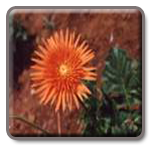 |
| YCD 2 (1995) |
|
It is a cut flower variety selected from among the germplasm collection at Horticultural Research Station, Yercaud. It blooms throughout the year with peak flowering during May – June. The flowers are attractive, rosy pink coloured, borne on long stalk without bend. The flowers have a vase life of 15 days in hills and 10 days in plains. The variety yields about 80 flowers / clump in a year and suitable for cultivation in hilly regions of Tamil Nadu. |
| Top |
| 4. Gladiolus |
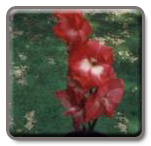 |
| KKL 1 (1993) |
|
It is an improved selection evolved at the Horticultural Research Station, Kodaikanal from the population of the cv. American Beauty. The selection is adapted to the hilly regions of Tamil Nadu particularly to the Palani hills, the Nilgiris and the Shevroys. (1200 – 2200m above M.S.L). The crop can be raised during August – February under lower altitudes while in the high mountains the season is from February – August. The flower colour is an attractive red purple with white flushed throat. The plant grows to a height of 116cm. The mean spike length is 89.4cm with an average of 16.2 florets per spike. The average floret size is 13.5cm. The florets are open shaped. Each spike weighs on an average of 92.3g with a vase life of 12.1 days. The selection yields on an average of 21.1 spikes and 19.5-corms/ sq.m. The spikes will be ready for the first harvest in 90 days after planting. The harvest of spikes will continue up to 120 days. The corms are harvested from 150 days after the leaves stared yellowing and drying. It yields 2,11,100 flower spikes and 1,95,000 corms/ha. It out yields its parent type (local) by 18.74% (flower spike yield) and 34.68% (corm yield). |
| Top |
| 5. Hibiscus |
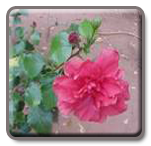 |
| CO 1 (Thilagam) (1981) |
|
It is an inter-generic hybrid between Hibiscus rosasinensis and Malvaviscus arboreus. It is a woody perennial shrub with an erect growth (2.3 meters) and attractive double flowers, which are having attractive carmine red petals without any throat colouration. There are 30-36 petals in a flower arranged in three whorls. It is highly floriferous yielding 3055 flowers per plant in a year. It is suitable for planting as a single specimen in lawn, foundation planting and for pot culture. |
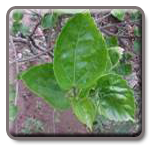 |
| CO 2 (Punnagai) (1981) |
|
It was evolved by selection from the open pollinated seedlings of ‘Chandrika’ variety. The plants are semi spreading, growing up to 1.5 m. The flowers are solitary, terminal or axilary, bigger in size with a diameter of 14cm. The flowers are attractive with apricot yellow colour having signal red throat. The petals have a crepe paper like texture with feeble veins radiating from the throat. The plant yields about 988 flowers per year. It is suitable for planting as single specimen in lawn and for pot culture. |
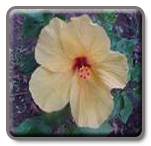 |
| CO 3 (1984) |
|
It is a clonal hybrid between Bright Yellow and Red Gold cultivars. It produces apricot yellow flowers having ‘signal red’ throat. The flower colour gradually changes to Chinese yellow with Turkey red throat in the evenings. It is floriferous and produces on an average 1309 flowers per plant every year compared to 374 and 503 flowers by their female and male parents respectively. It takes about 105 days for flowering from planting. |
| Top |
| 6. Jathimalli |
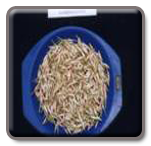 |
| CO 1 (1980) |
|
It is a secondary clonal selection from germplasm collection. The average flower yield is 10,144kg per hectare in a year. The flower buds are pink tinged with long corolla tube. It is suitable for oil extraction with a concrete recovery of 0.29%. The concrete yield is 29.42 kg per hectare. |
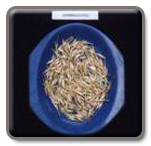 |
| CO 2 (1991) |
|
It is an induced mutant (I.M.3) developed by treating the vegetative cuttings of CO.1 Pitchi with gamma rays @ 1.5 kR. This mutant is characterised by bold pink buds. The flower bud is 4.14 cm in length as against 4.00 cm in CO.1. The 100 buds weight is 10 g in CO.2 as against 9.4 g in CO.1. This variety is amenable for earlier and quicker tying of buds in garland making. It yields on an average 11.68 tonnes of flower buds per hectare, which is 19.5 per cent higher than CO.1 Pitchi. |
| Top |
| 7. Marigold |
| MDU 1 (1986) |
It is a selection from a germplasm type. The plants are medium tall with moderate branching habit. The plant produces on an average 97 flowers weighing 561.40 g/plant, with an estimated yield of 41.54 t/ha. The flowers are large with a stalk length of 8.39 cm. The light orange colour petals are compactly arranged and each flower has 210 petals. The flowers fetch premium price in the market. |
| Top |
| 8. Mullai |
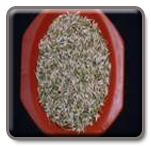 |
| PARIMULLAI (1972) |
|
It is a clonal selection from a germplasm clone. The plants exhibit resistance to gall mite. The yield is 7800 kg of flower buds per hectare per year. The buds are white with moderate corolla tube length (1.25cm). The concrete recovery is 0.29%. |
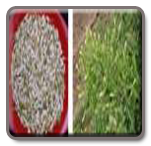 |
| CO 1(1980) |
|
It is a secondary clonal selection from a local type. The flower buds are white and bold with long corolla tube (1.50cm) than Parimullai. The yield is 8800 kg of flower buds per hectare in a year. The jasmine concrete recovery is 0.34%. |
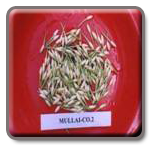 |
| CO 2 (1988) |
|
It is a clonal selection from progenies with desirable flower bud characters like long corolla tube and longer bud. The length of the corolla tube is 1.70 cm while it is 1.5cm in CO.1. It yields on an average of 11,198 kg of fresh flower buds as against 8,825kg in CO.1. It exhibits complete field tolerance to the phyllody disease and gall mite infestation. |
| Top |

